- High temperatures expected for Australian Open tennis championships
- Temperatures set to reach 42 degrees Celsius in Melbourne
- Tournament has an 'Extreme Heat' policy
- Men's champion Novak Djokovic fell victim to conditions in 2009
(CNN) -- Maria Sharapova once labeled the conditions as "inhuman" and three-time defending men's champion Novak Djokovic suffered a dramatic meltdown in a quarterfinal match in 2009 so it's with a degree of trepidation that the world's elite go into the Australian Open with a heatwave forecast for Melbourne.
Temperatures are predicted to reach a blistering 42 degrees Celsius Tuesday (107 fahrenheit) and remain at that level until the weekend.
While the opening grand slam of the season has an Extreme Heat Policy -- in place since 1998 -- it is rarely invoked and players simply have to make do.
Djokovic, who had to retire with heat exhaustion against Andy Roddick when defending his 2008 crown, has become renowned for his supreme fitness levels and claims to be ready for any challenge.
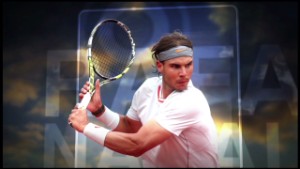 Who will be the tennis ace of 2014?
Who will be the tennis ace of 2014? 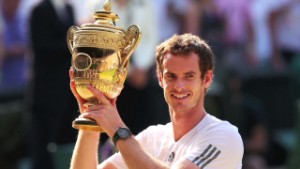 Is Murray ready for the Australian Open?
Is Murray ready for the Australian Open? 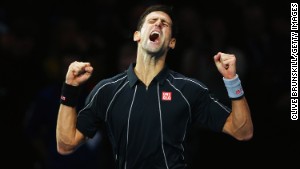 Novak Djokovic wins the ATP World Tour final
Novak Djokovic wins the ATP World Tour final "I am expecting to play in big heat. You always have to expect because you can't really predict Melbourne's weather, it's changing a lot," Djokovic told gathered reporters on the eve of his title defense.
Read: Djokovic: All you need is love
"I remember the 2008, 2009 and 2010 tournaments, there were several days I played in extreme heat. So I know how tough it is.
"But it's the same for myself and my opponent so you have to adjust to it," he said.
Given a favorable draw, avoiding the likes of world number one Rafael Nadal, Andy Murray and Roger Federer until at least the final, Djokovic is unlikely to be troubled by the weather or his first round opponent Lukas Lacko of Slovakia Monday.
After that the level of the opposition and the heat is expected to rise with Swiss Stanislas Wawrinka looming large as his main threat.
Wawrinka extended Djokovic in a five-set fourth round clash last year which many considered the outstanding match of 2013.
Read: Return of legends 'good for the game'
This time around they cannot meet until the semifinals by which time forecasters are predicting a return to more manageable conditions.
Sharapova, playing her first grand slam since Wimbledon last year, remains wary of conditions after being reminded of her 2007 three-setter against France's Camille Pin, after which she made her outburst.
"I don't think anyone can prepare themselves for that type of heat," she told reporters.
 Who will be the tennis ace of 2014?
Who will be the tennis ace of 2014? 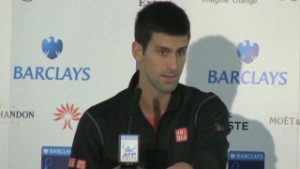 Djokovic: Anti-doping system not working
Djokovic: Anti-doping system not working 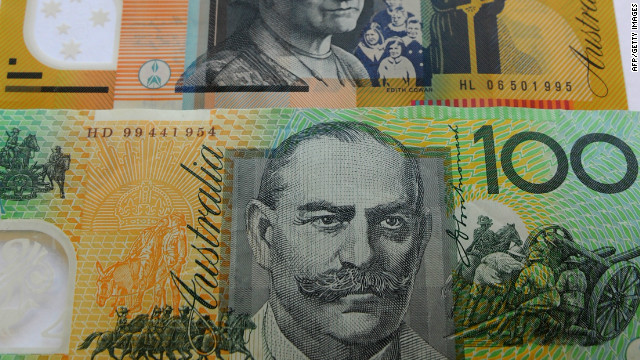 When it comes to prize money, the Australian Open leads the way, with the 2012 tournament the richest in grand slam history. The prize fund is a whopping $23.9 million, with the winners of each singles event collecting a cool $2.2 million while the losing finalists can console themselves with a $1 million check.
When it comes to prize money, the Australian Open leads the way, with the 2012 tournament the richest in grand slam history. The prize fund is a whopping $23.9 million, with the winners of each singles event collecting a cool $2.2 million while the losing finalists can console themselves with a $1 million check.  The Melbourne sun can often soar to uncomfortable levels, with the 2007 tournament proving to be particularly hot. Maria Sharapova was among those to suffer in the conditions despite the Extreme Heat Policy that was introduced in 1998. This comes into play when temperatures hit 35 degrees Celcius, and can result in matches being suspended until the weather cools down.
The Melbourne sun can often soar to uncomfortable levels, with the 2007 tournament proving to be particularly hot. Maria Sharapova was among those to suffer in the conditions despite the Extreme Heat Policy that was introduced in 1998. This comes into play when temperatures hit 35 degrees Celcius, and can result in matches being suspended until the weather cools down.  In recent years, the sport's genteel reputation has taken a bit of a battering, with Melbourne's Serb and Croat communities often coming to blows while supporting their favorite players. This rivalry appears to have intensified as top players like men's world number one Novak Djokovic have become more successful.
In recent years, the sport's genteel reputation has taken a bit of a battering, with Melbourne's Serb and Croat communities often coming to blows while supporting their favorite players. This rivalry appears to have intensified as top players like men's world number one Novak Djokovic have become more successful.  Although the singles winners' trophies are instantly recognizable, their titles are not as widely known. The men battle it out for the the Norman Brookes Challenge Cup, while the top woman will collect the Daphne Akhurst Memorial Trophy -- both famous names from the tournament's illustrious history.
Although the singles winners' trophies are instantly recognizable, their titles are not as widely known. The men battle it out for the the Norman Brookes Challenge Cup, while the top woman will collect the Daphne Akhurst Memorial Trophy -- both famous names from the tournament's illustrious history.  The Australian Open has had many different homes since the first tournament in 1905. Five cities have played host, with two events also played in New Zealand. Melbourne's Kooyong Lawn Tennis Club became the permanent site in 1972, before the current venue at Melbourne Park was built specifically for the tournament in 1988.
The Australian Open has had many different homes since the first tournament in 1905. Five cities have played host, with two events also played in New Zealand. Melbourne's Kooyong Lawn Tennis Club became the permanent site in 1972, before the current venue at Melbourne Park was built specifically for the tournament in 1988.  The green hard-court playing surface was abandoned in 2008 and replaced with a blue alternative that has higher bounce and more cushioning, and is supposed to retain less heat.
The green hard-court playing surface was abandoned in 2008 and replaced with a blue alternative that has higher bounce and more cushioning, and is supposed to retain less heat.  Soaring crowds meant the tournament needed a bigger home, which resulted in the construction of Melbourne Park. The Australian Open consistently has the highest attendances of all four majors, with the 2010 event achieving a record single-day crowd of 77,043 and an overall figure of 653,860.
Soaring crowds meant the tournament needed a bigger home, which resulted in the construction of Melbourne Park. The Australian Open consistently has the highest attendances of all four majors, with the 2010 event achieving a record single-day crowd of 77,043 and an overall figure of 653,860.  History was made in Melbourne in 1997 when Switzerland's Martina Hingis lifted the women's singles title with a 6-2 6-2 final success over Mary Pierce of France. Aged just 16 years and three months, Hingis became the youngest grand slam singles winner -- a record she continues to hold -- and she followed that success with victories in 1998 and 1999.
History was made in Melbourne in 1997 when Switzerland's Martina Hingis lifted the women's singles title with a 6-2 6-2 final success over Mary Pierce of France. Aged just 16 years and three months, Hingis became the youngest grand slam singles winner -- a record she continues to hold -- and she followed that success with victories in 1998 and 1999.  Australia has not enjoyed a home success in the men's singles since Mark Edmondson triumphed in 1976. Opponent John Newcombe was expected to retain his title from the previous year, but Edmondson produced a stunning display to win in four sets. It was the 21-year-old's first career title and, at 212th, he is the lowest-ranked grand slam winner in history.
Australia has not enjoyed a home success in the men's singles since Mark Edmondson triumphed in 1976. Opponent John Newcombe was expected to retain his title from the previous year, but Edmondson produced a stunning display to win in four sets. It was the 21-year-old's first career title and, at 212th, he is the lowest-ranked grand slam winner in history.  Australian Open: Essential facts
Australian Open: Essential facts "When you try to put in that effort, that maximum effort to give as an athlete, it's pretty difficult for a longer period of time."
Murray, himself back in action after a layoff for surgery, is also not relishing extreme temperatures despite preparing for the championships in Florida.
"The difference between 32 degrees or whatever in Florida and 40, it's a huge difference.
"It feels very different on the court. The court gets so hot, the air is extremely hot as well."
Read: Serena cements status as favorite
If he can get the better of conditions, it is likely that both Roger Federer then Nadal would stand in his path if he wants to repeat last year's men's final showdown with Djokovic.
Defending champion Victoria Azarenka and top seed Serena Williams are strongly favored to meet in the women's final and both claim to be unperturbed about the rising temperature gauge.
"I've been here playing for, what, last eight years. It's not a new thing to play in the heat. I actually enjoy that," said Azarenka.
"I mean, not all the time probably, but it's nice to get some sun."
Williams tweeted earlier this week to complain about the cold conditions in the Victorian capital, but claims to be ready for whatever awaits.
Read: Sharapova 'goosebumps' after comeback win
"I've been training my whole life in the heat. I think I'm pretty used to it. But obviously the heat in Melbourne is just completely different than any other heat," said the American.
"But it's okay. I've just got to be ready to play under any circumstances."
For the record, the hottest Australian Open was in 2009 when the average daily temperature was 34.7 Celsius, with Djokovic the most high-profile victim.
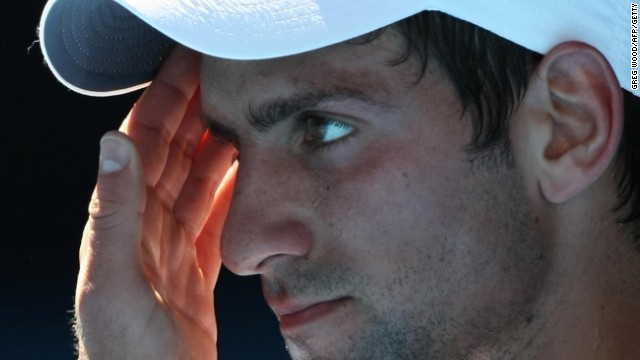 Novak Djokovic contemplates his fate ahead of his retirement with heat exhaustion in a quarterfinal match against Andy Roddick at the Australian Open in 2009.
Novak Djokovic contemplates his fate ahead of his retirement with heat exhaustion in a quarterfinal match against Andy Roddick at the Australian Open in 2009.  Djokovic used ice soaked towels in an attempt to cool down in the searing afternoon temperatures in Melbourne.
Djokovic used ice soaked towels in an attempt to cool down in the searing afternoon temperatures in Melbourne.  Spectators wear towels to beat the heat as Tatsuma Ito of Japan played Nicolas Mahut of France on the fourth day of the 2012 tournament in Melbourne.
Spectators wear towels to beat the heat as Tatsuma Ito of Japan played Nicolas Mahut of France on the fourth day of the 2012 tournament in Melbourne.  Spectators during the 2009 tournament use a time honored fashion to cool themselves down in the blazing heat.
Spectators during the 2009 tournament use a time honored fashion to cool themselves down in the blazing heat.  Andy Murray tries to acclimatize himself to the searing conditions during the hottest championship on record in 2009 at Melbourne Park.
Andy Murray tries to acclimatize himself to the searing conditions during the hottest championship on record in 2009 at Melbourne Park.
No comments:
Post a Comment